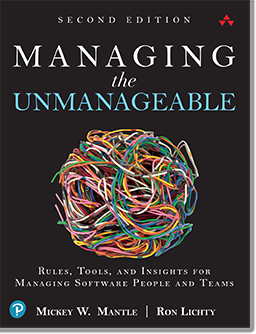The Skinny on Standups: Make them Effective, Hold Them Daily
by Ron Lichty
 Daily standups are vital.
Daily standups are vital.That’s what our 2015 Study of Product Team Performance reveals. Teams that hold effective standups are more likely to be high performance teams; and the more frequent the standups, the higher the performance: teams holding standups daily report the highest performance of all.
While standups aren’t ubiquitous, by any means, they’re the first practice of scrum that most teams implement, the last practice standing when teams revert to waterfall, and to have a life of their own even outside scrum: lean doesn’t mandate them but they’re common among kanban teams; and even teams using waterfall and spiral are embracing standups.
The Study tells us that organizations have been right to do so.
The group most highly correlated with high performance teams are those holding effective standups daily, and that’s 22 percent of teams these days, according to our survey.
Given that 26 percent of respondents are using scrum, that means at least four percent of scrum teams are off their scrum game - and missing out on a frequency that correlates to the highest performance.
Another 18.2% reported holding effective standups “regularly” though not daily, and their teams correlate to generally delivering higher performance than all but those holding standups daily. Added together, 40% regularly conduct standups that make for an effective cornerstone of the product development process.
These best-in-class organizations are followed by another 41% that report standups are effective, but irregular - not conducted on a regular basis.
While 19% of survey respondents indicate that standups are ineffective and for some of them even contentious and a waste of time, a remarkable 81% called their standup meetings effective.
Reflecting back on findings from past studies, we know that 20% of product teams report issues with cross-functional handoffs and transitions that are too often responsible for degradation in team performance - interestingly, almost the same number as are holding ineffective standups.
The regression analysis we undertook in this year’s study clearly demonstrates that standup meetings are vital to effective product team communication and help eliminate or reduce issues that impede high performance. It also shows that product teams that invest the time and energy necessary to make standups both effective and part of their daily routine will see significant performance benefits.
…..
photo credit: By Michaelblinkpipe (Own work) [CC BY-SA 3.0 (http://creativecommons.org/licenses/by-sa/3.0)], via Wikimedia Commons


 Interim VP Engineering,
Interim VP Engineering,